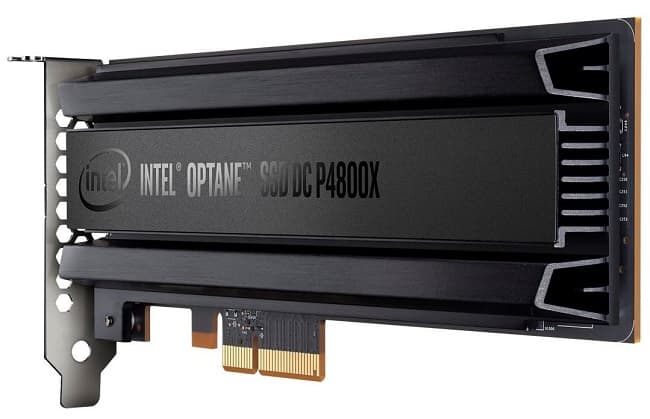Intel's 375GB Optane SSD doubles as RAM, packs great features
In 2015, Intel announced a SDD which would be 10 times faster than DRAM and 1000 better than NAND. After a wait of 2 years, company has finally launched its much-awaited 3D XPoint powered Optane series of SSDs. Optane SSD DC P4800X is the first product from the series and is initially available in limited stock at a hefty price tag of $1520. It provides a storage capacity of 375GBs and is structured upon PCle card.

That’s just for the 1st quarter of the year. Company aims to launch a number of new products including a 1.5TB PCIe card and a 1.5TB U.2 stick in the second half. These devices are aimed to fulfill enterprise computing needs finding application in fields like artificial intelligence and machine learning, fast trading, medical procedures and what not. The claimed 5-8 times faster performance is due to Intel’s all new 3D Xpoint tech. P4800X can reach read and write rates of up to 2400MB/s and 2000MB/s respectively which is not the best in the game. But, it leaves the competition way behind in its ability to sustain high I/O loads, courtesy of those low latencies.
Higher endurance is also a feature of Optane drives. Where most of the NANDs permit a whole drive write rate of 0.5-10 times per day, the number is 30 for a comparably dense Optane SSDs. Combining low latency and high endurance allowed Intel to use these in a totally unique fashion. Intel says it can also be used as RAM by utilizing “Memory Drive Technology†in conjunction with the right chipset; indirectly Xenon processors.
The new SSDs from Intel will undoubtedly increase the server space. For comparison, a 2 socket Xeon system can hold about 3TB of RAM but 24TB of Octane. That’s a 12-fold increase! If this idea of using an SSD as RAM is hard to accept, wait for next year when Intel releases Optane DIMMS.
Source: #-Link-Snipped-#

That’s just for the 1st quarter of the year. Company aims to launch a number of new products including a 1.5TB PCIe card and a 1.5TB U.2 stick in the second half. These devices are aimed to fulfill enterprise computing needs finding application in fields like artificial intelligence and machine learning, fast trading, medical procedures and what not. The claimed 5-8 times faster performance is due to Intel’s all new 3D Xpoint tech. P4800X can reach read and write rates of up to 2400MB/s and 2000MB/s respectively which is not the best in the game. But, it leaves the competition way behind in its ability to sustain high I/O loads, courtesy of those low latencies.
Higher endurance is also a feature of Optane drives. Where most of the NANDs permit a whole drive write rate of 0.5-10 times per day, the number is 30 for a comparably dense Optane SSDs. Combining low latency and high endurance allowed Intel to use these in a totally unique fashion. Intel says it can also be used as RAM by utilizing “Memory Drive Technology†in conjunction with the right chipset; indirectly Xenon processors.
The new SSDs from Intel will undoubtedly increase the server space. For comparison, a 2 socket Xeon system can hold about 3TB of RAM but 24TB of Octane. That’s a 12-fold increase! If this idea of using an SSD as RAM is hard to accept, wait for next year when Intel releases Optane DIMMS.
Source: #-Link-Snipped-#
0
